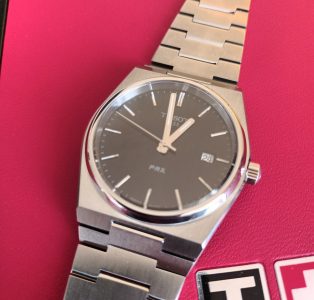I confess I have a fondness for Tissot watches. This fact is built mainly on nostalgia, as I was given a quartz PR100 in 1978 by my mother when I was about to join the Royal Navy. I suppose it was my first “grown up” watch and I really liked it. The piece had a nice dark grey/blue dial and was stainless steel on a bracelet. The fact that a year later it was gone (having been stolen on board my first ship), did not dampen my enthusiasm for the brand as, at the first opportunity, I replaced it with another PR100. This one had a white dial, Roman numerals, a gold plated multi-faceted bezel, plus a bi-colour bracelet. This watch I still have, and, although battered, it still goes fine.
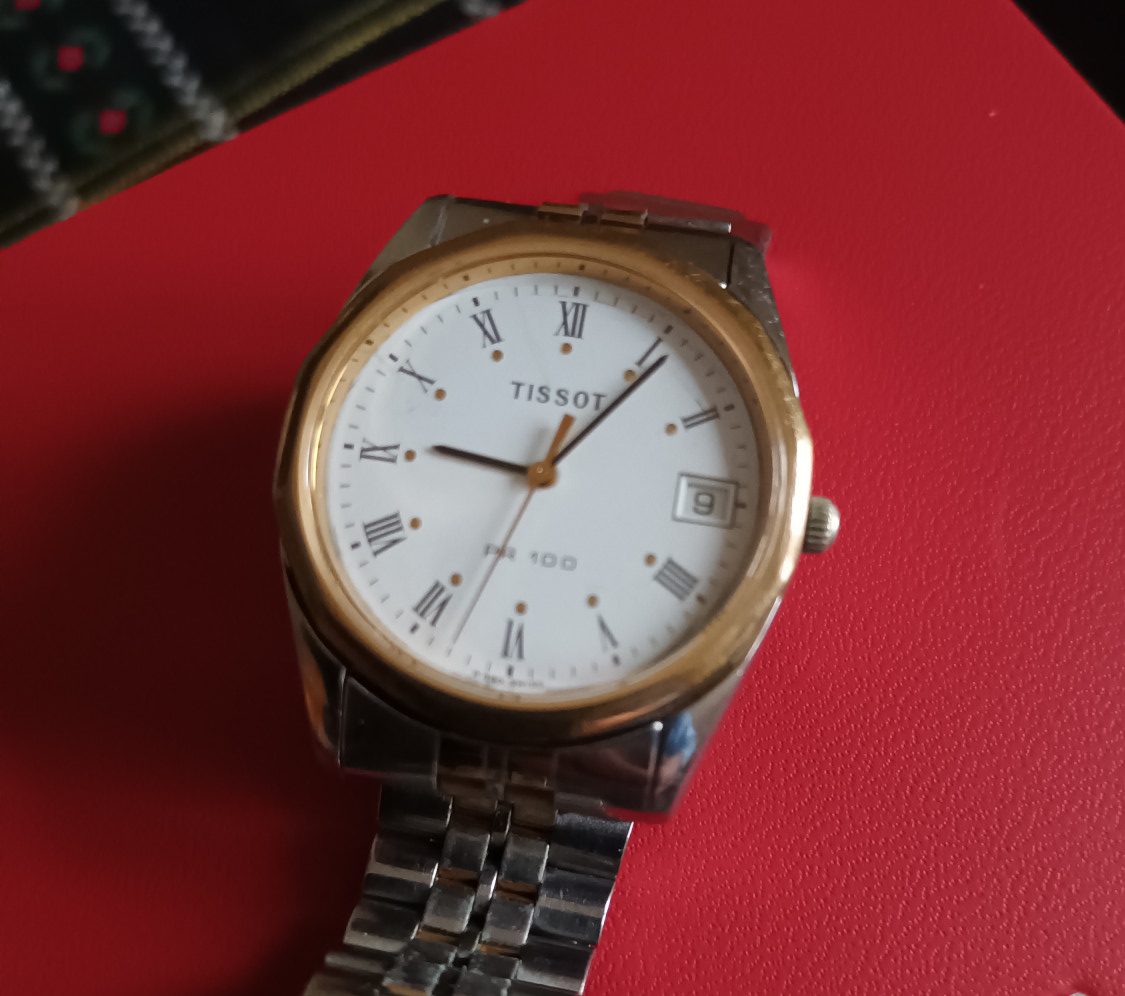
In fact, it should be noted that in around 1995 it survived an electrocution, when I inadvertently touched a live cable on an old Jensen I had. All I recall is a bang and a blue flash, and, as I instinctively jerked my arm back, caught a whiff of burning meat. To my horror, when I looked at the watch, the clasp was glowing red! I frantically grappled to get the watch off – which of course necessitated burning my fingers too. I managed to wrench it free and chucked to the far side of the garage. A trip to the hospital with frozen peas lashed to my wrist ensued. I had a bad burn on my inner wrist, but it healed OK albeit leaving some scarring. The slightly amusing thing about this is when my 6 year old son appeared at the garage (which was under the house), and said “what was that shriek?” and then “what was that funny smell?”! I retrieved the watch the next day and it was still going, but the bracelet now had an interesting burn hole right through the clasp where the arc occurred! As such, I admire the robustness of the brand too.
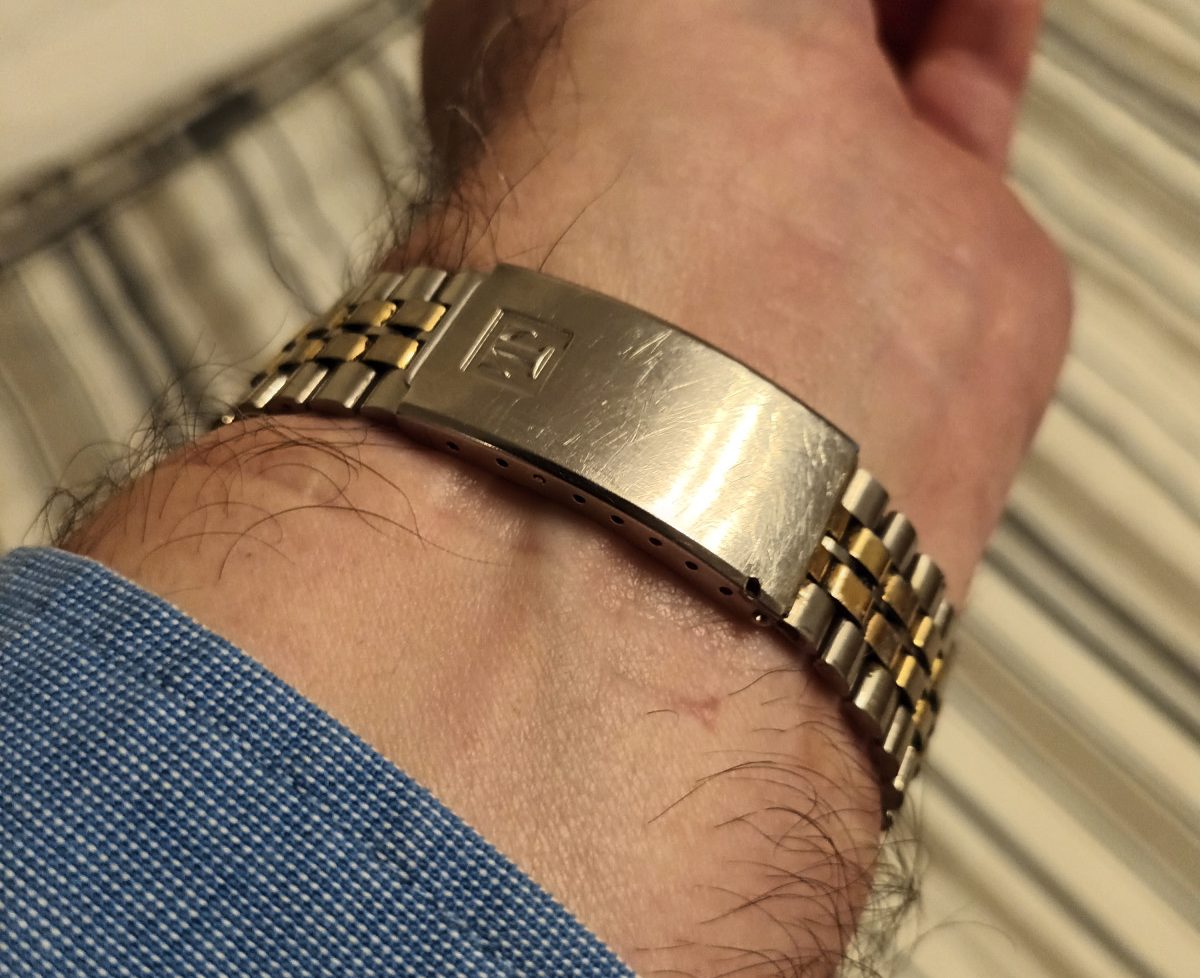
Anyway, earlier this year I saw the launch details of the PRX range and then viewed in my local AD. Initially the three quartz models (black, blue and white dials), and then the mechanical ones. A few months later I was able to study these in a little more detail. The former are really no-frills, what you see is what you get types. The latter are more sophisticated, with the very decent Powermatic 80 calibre (as within my Ballade – although not COSC rated) and nice dials, with a hobnail type pattern. In the end I decided to get the quartz model (with black dial), as I fancied another electric Tissot, plus, as mentioned, I already had a Powermatic Tissot.
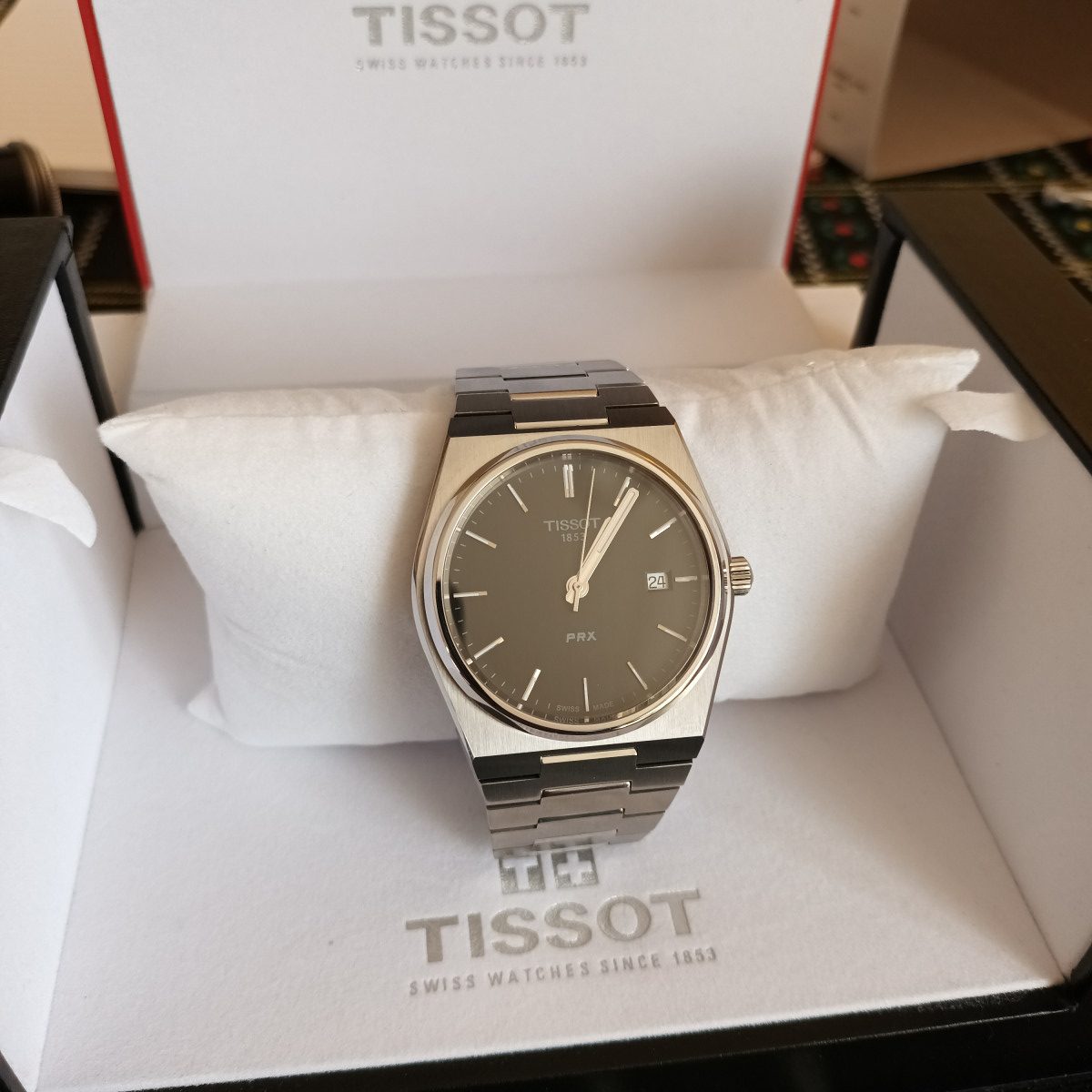
This review is on the brief side, as frankly, there is just not that much to say! So, I will briefly give the detail, pass some comment, and show some images.
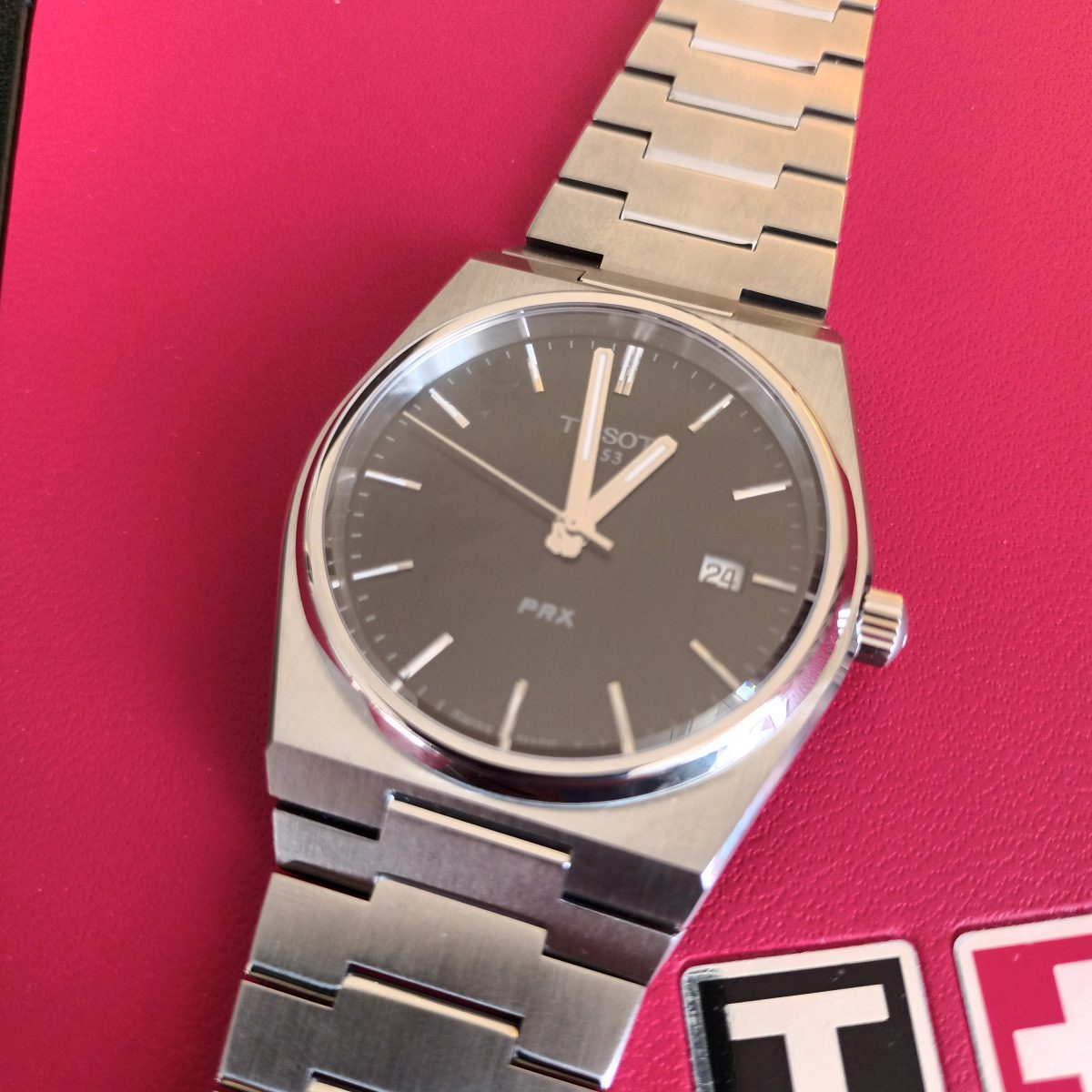
I suppose one would call the PRX a sports watch as it all S/S and on a metal bracelet. The lightly brushed case is some 40 mm x 10.4 mm and of an angular ovoid/tonneau shape – a throw-back to the PRX 40 back in 1978 (when Incidentally I got my first PR100 which had a similar shape although smaller and thinner). The bracelet is integrated with a double butterfly clasp, along with a “quick release” feature on the case, activated by squeezing together two raised screws (more later). The dial has some very fine vertical brushing and is surrounded by a polished bezel. As there are no numerals on the dial, lumed rectangular batons are employed. The main hands are baton-shaped with lume. A simple date window sits at 3. The motive power is courtesy of a quartz ETA Calibre F06.115, which has a battery life of around 2 years. Like other Tissots, the watch lets you know when power is dwindling by the seconds hand starting to “skip” a beat. The glass is sapphire, but has no anti reflection. There is a solid case back and water resistance is to 100m. Lastly, a 2 year warranty is offered. That is about it really. Price, well, when I bought the watch back in May, the rrp was £295. Again me being me, I actually paid a mere £250!!
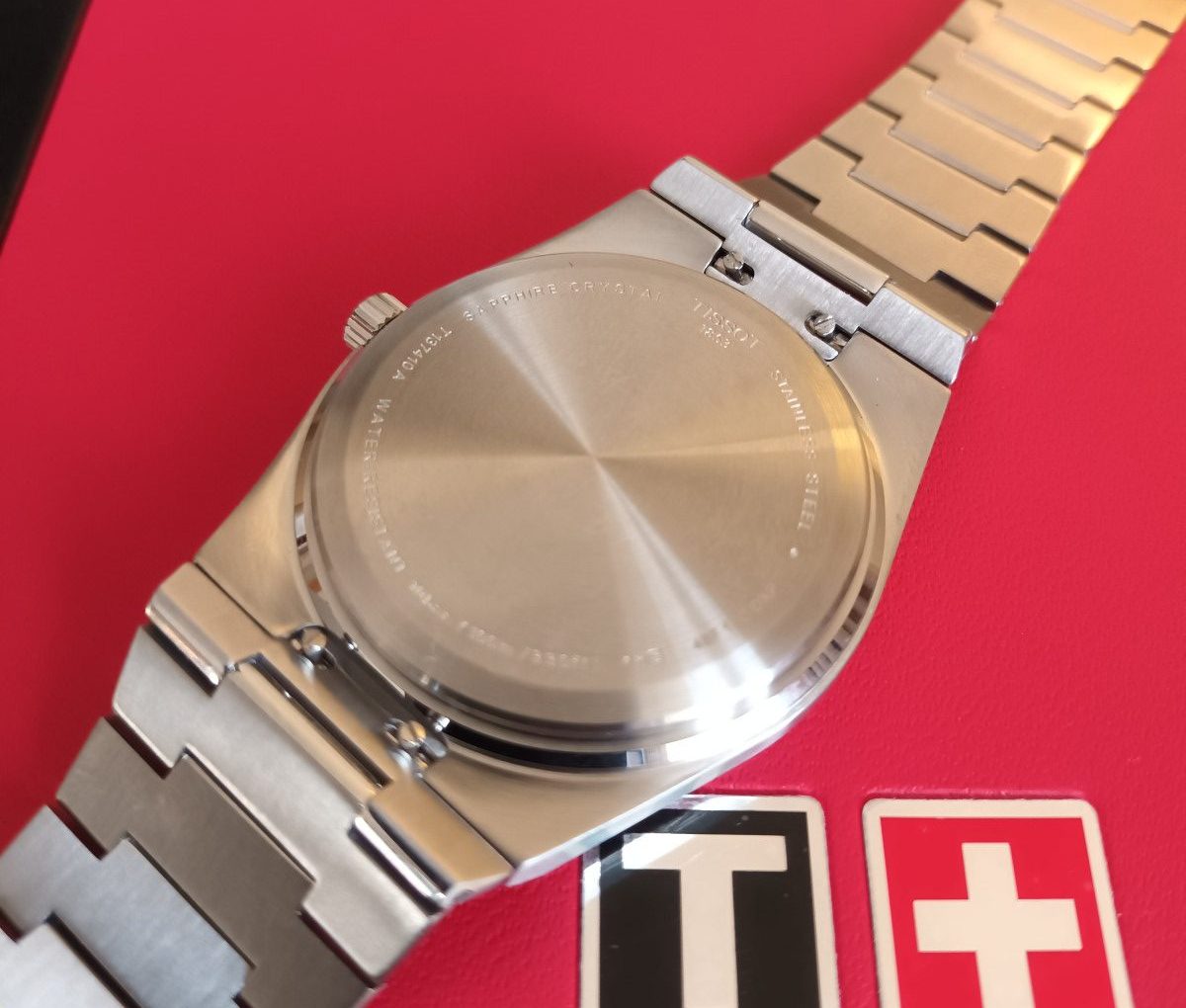
So, what are my conclusions. Well, as an attractive, robust, functional, accurate and low maintenance watch – from a historic brand at pretty modest cost, what is there not to like? It wears well size-wise and is comfortable. Yes, it does have a few minor flaws. I think that non-reflective glass probably should be standard these days as it is just irritating not being able to read the dial on all occasions without tilting etc. Also, the bracelet adjustment (via split type pin extraction) is agricultural and a bit of a pain. It would cost little to have the first few links with screw pins. The bracelet/case release “screws” are also very odd too, and none-too aesthetic. At first glance, they look like simply protruding bracelet to case fixing screws that have missed the attention of the quality control people! Well, in fact they are sort of just that! As such I tried to screw them in, but failed as the threads were not very long so would not go in further. A consult on the internet revealed their real function – sprung levers that move inwards to release the bracelet. That said, I feel they really should be a bit more discrete perhaps. Overall, I suspect there is a cost threshold at play here because keeping at sub-£300 may be important, and as this is the case I feel that, overall, the watch is pretty good value and I commend it. Incidentally, the mechanical PRX is some £565 (so a little under double the quartz version), and this I feel represents really good value too – bearing in mind a super dial and movement.
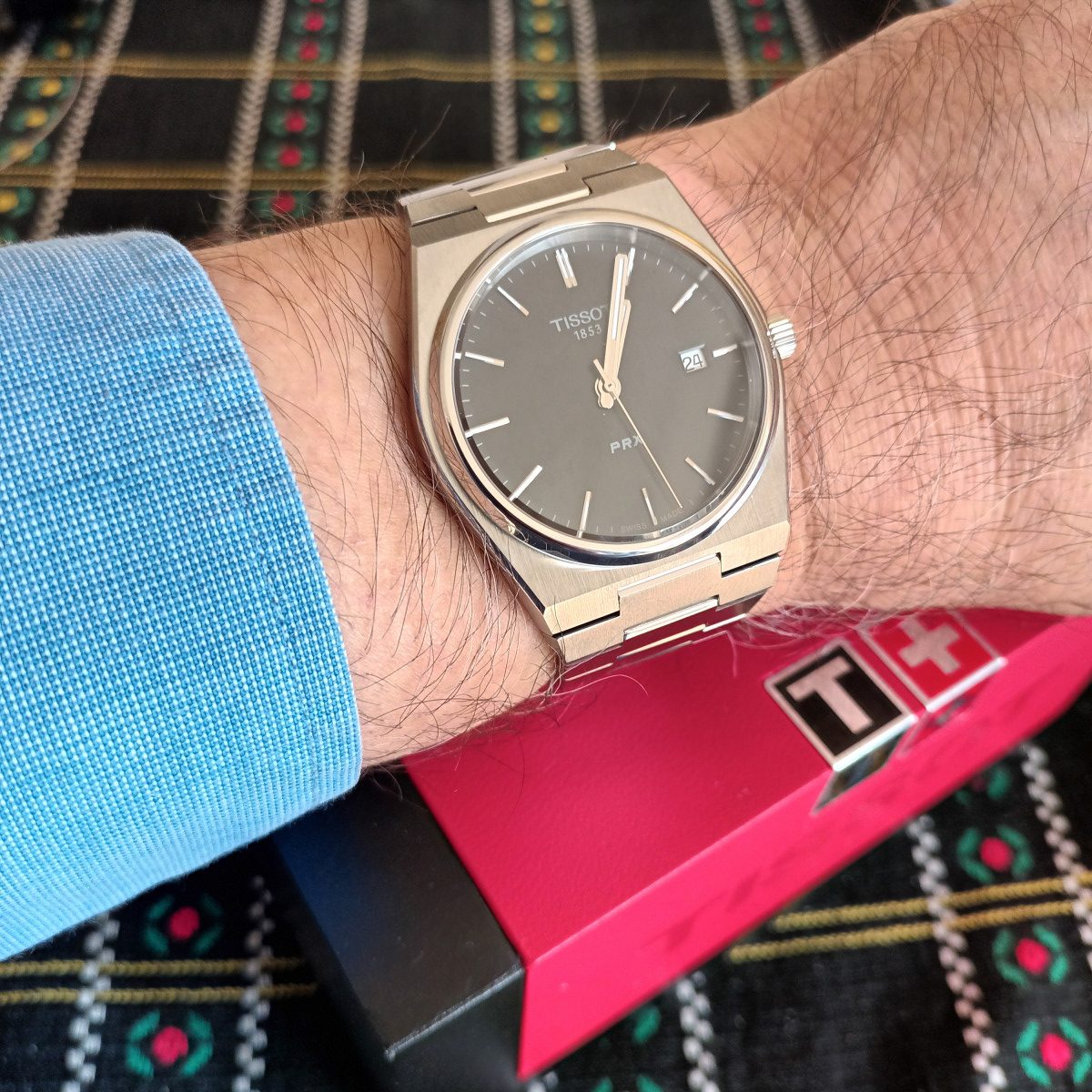
Rating: 4/5
Words/Images.: The Writer

